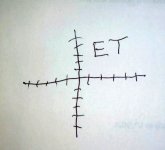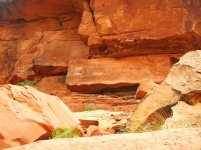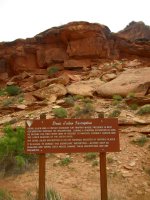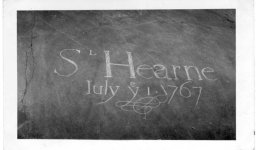I live in an urbanized area, and in my travels about I frequently encounter graffiti. As a canoeist, I frequently find myself under bridges—prime graffiti territory. Most of the time the graffiti is eminently forgettable. Graffiti is almost always a crime, and much of it is juvenile, foul, profane, or just egotistical tags—who can write their names the largest and brightest.
But every so often I come across graffiti that I find impressive. It first has to be decent and more than just tagging something with a name. For example, consider “Kiss Pretty Girls” written in 8’ high letters beneath I-95 in Baltimore. I guess if you assume it was painted by a male, it could be regarded as misogynistic, but outside of that, it’s not an ugly sentiment. It represents a lot of paint and effort, and crime though it may be, it brought a smile to my face.
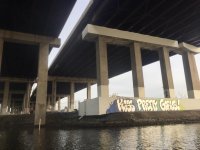
I was hiking along the Patapsco River recently and ran across graffiti so elegantly executed that it encroaches on art. The Lady Drinking Wine is about 8’, top to bottom and features delicately painted feather/fur jacket and realistic shadowing. Too bad others have tagged on top of it, which seems to be the fate of all graffiti. Who goes out to ruins in the woods and spends the time and effort to leave a painting like the Lady?

Last week I hiked in the Ilchester section of Patapsco Valley State Park where lie the ruins of St. Mary’s Seminary. Talk about time and effort, this is the most extensive graffiti work I have ever run across. Whoever is doing it is either a mean SOB or has so impressed the other graffiti peep that they leave this work be.
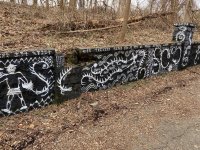
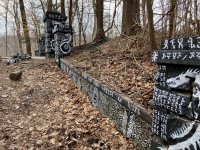
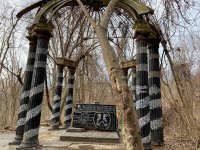
But every so often I come across graffiti that I find impressive. It first has to be decent and more than just tagging something with a name. For example, consider “Kiss Pretty Girls” written in 8’ high letters beneath I-95 in Baltimore. I guess if you assume it was painted by a male, it could be regarded as misogynistic, but outside of that, it’s not an ugly sentiment. It represents a lot of paint and effort, and crime though it may be, it brought a smile to my face.

I was hiking along the Patapsco River recently and ran across graffiti so elegantly executed that it encroaches on art. The Lady Drinking Wine is about 8’, top to bottom and features delicately painted feather/fur jacket and realistic shadowing. Too bad others have tagged on top of it, which seems to be the fate of all graffiti. Who goes out to ruins in the woods and spends the time and effort to leave a painting like the Lady?

Last week I hiked in the Ilchester section of Patapsco Valley State Park where lie the ruins of St. Mary’s Seminary. Talk about time and effort, this is the most extensive graffiti work I have ever run across. Whoever is doing it is either a mean SOB or has so impressed the other graffiti peep that they leave this work be.




